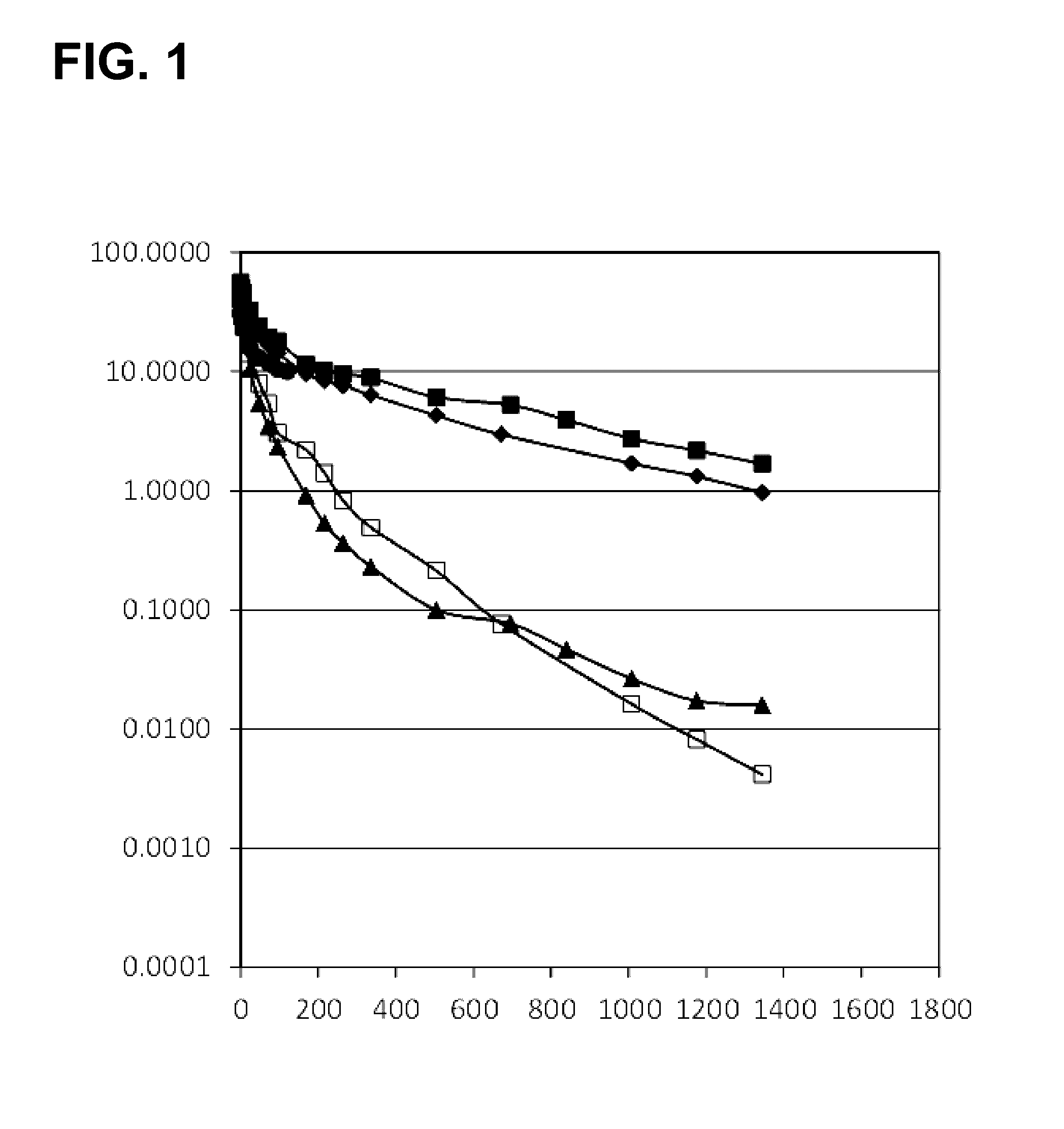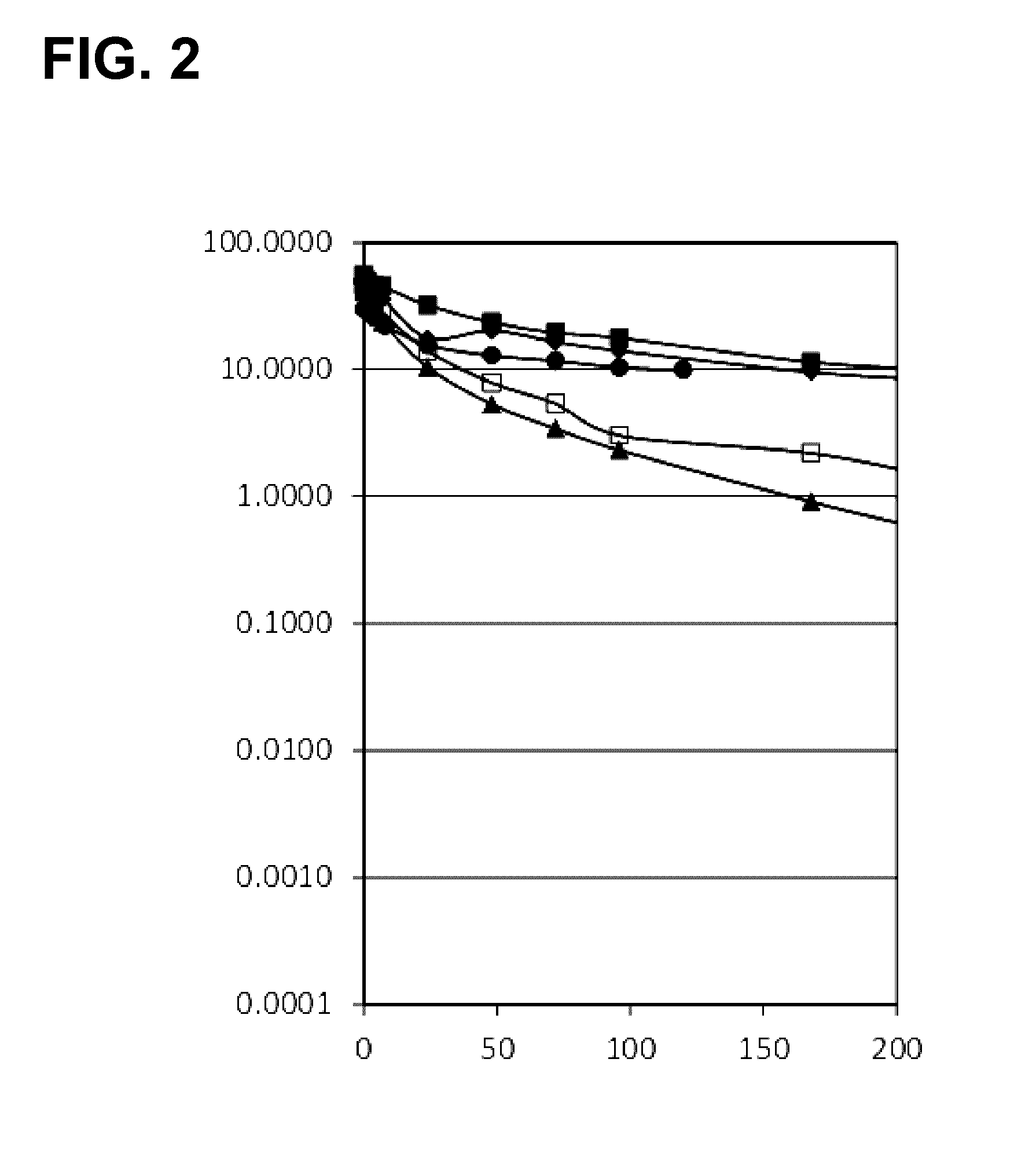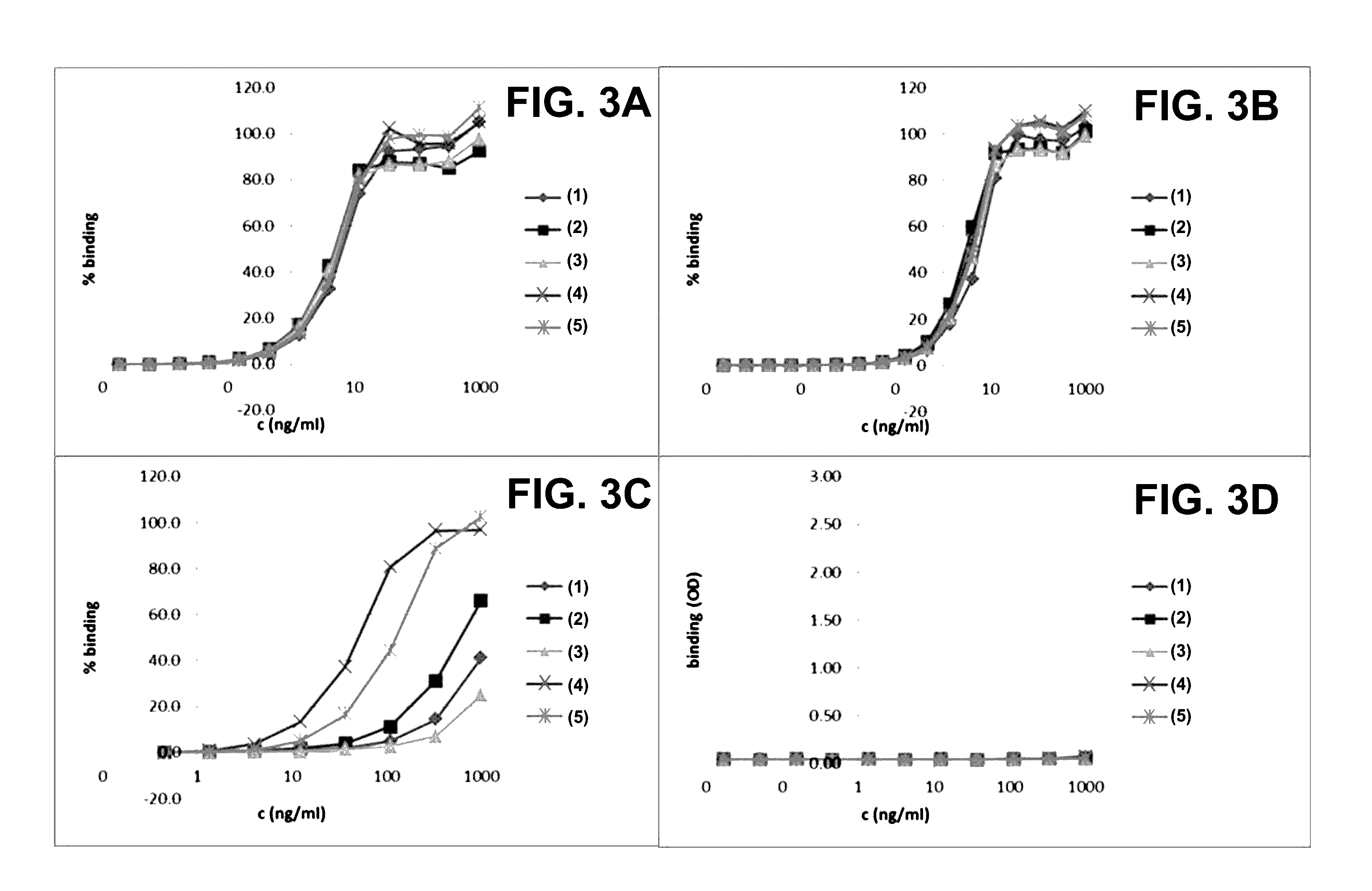HUMANIZED ANTI-TAU(pS422) ANTIBODIES AND METHODS OF USE
a humanized and antitau technology, applied in the field of humanized antitau (ps422) antibodies, can solve the problems of general application criteria for the selection of humanized antibodies that are not sufficiently stringent in order, and achieve the effects of reducing tau, preventing neurofibrillary tangle spreading, and maintaining cognition and function
- Summary
- Abstract
- Description
- Claims
- Application Information
AI Technical Summary
Benefits of technology
Problems solved by technology
Method used
Image
Examples
example 1
Preparation and Purification of Rabbit Antibodies
Immunization
[1038]New Zealand White (NZW) rabbits from Charles River Laboratories International, Inc. were used for immunization. Phosphopeptide tau (416-430)[pS422] coupled on keyhole limpet hemocyanin (KLH) was solved in K3PO4 puffer, pH 7.0 at a concentration of 1 mg / ml and mixed (1:1) with complete Freund's adjuvant (CFA) till generation of stabile emulsion. Three rabbits received an intra-dermal (i.d.) injection of 2 ml of emulsion followed by a second intra muscular (i.m.) and third subcutaneous (s.c.) injection each with 1 ml in one week interval. The fourth i.m. injection of 1 ml was performed two weeks later followed by two further s.c. injections of 1 ml in four weeks interval. 10 ml peripheral whole blood samples of each animal was collected 4-6 days after third, fourth, fifth and sixth injection and used for single cell sorting in FACS. An additional 0.5 ml serum of each animal was collected at the same time and used for t...
example 2
Anti-Tau(pS422) Monoclonal Rabbit Antibodies are Highly Selective for Tau Phosphorylated at pS422 and Bind to Fibrillary Aggregates of Tau(pS422)
ELISA
[1051]Rabbit monoclonal antibodies were recombinantly expressed in HEK293 cells. Cell culture supernatants or purified rabbit antibodies were tested for binding to biotinylated tau (416-430)[pS422], non-phosphorylated tau (416-430), KLH and the unrelated phospho-peptide MCAK Human (88-102)[95-pSer] by ELISA. For preparation of ELISA plates, streptavidin pre-coated microtiter plates were incubated with biotinylated tau (415-430)[pS422] at 50 ng / ml for 1 hour at room temperature. Coating with KLH or control peptides was performed at 1 μg / ml. Rabbit anti-Tau(pS422) antibody (Abcam AB51071) or rabbit antibody containing supernatants were incubated in the antigen labeled microtiter plates for 60 minutes at various concentrations. After intensive washing, the binding of the rabbit antibodies was detected using a sheep anti-rabbit IgG digoxig...
example 3
Binding of Anti-Tau(pS422) Monoclonal Rabbit Antibodies to Intracellular pTau in Brain Sections of Alzheimer's Disease Patients
[1056]The specific and sensitive immunohistochemical detection of pTau pathology in Alzheimer's disease brain tissue by monoclonal rabbit anti-Tau(pS422) antibodies was investigated by immunofluorescence staining experiments using cryosections of human brain tissue from AD patients. Rabbit IgGs were detected by goat anti-rabbit Alexa Fluor488® conjugated secondary antibodies (Invitrogen / Molecular Probes A11034). Specific and sensitive staining of pTau deposits and filaments was evident for clones mAb 005, mAb 019, mAb 020, mAb 085, mAb 086 and mAb 097. Intracellular pTau deposits, like large neurofibrillary tangles and elongated neutrophil threads, were noticeable. A minimal effective concentration ranging between 0.08 and 0.016 μg / ml was determined for all clones investigated, which indicates highly sensitive binding to genuine human pTau deposits.
PUM
| Property | Measurement | Unit |
|---|---|---|
| concentrations | aaaaa | aaaaa |
| concentrations | aaaaa | aaaaa |
| temperature | aaaaa | aaaaa |
Abstract
Description
Claims
Application Information
 Login to View More
Login to View More - R&D
- Intellectual Property
- Life Sciences
- Materials
- Tech Scout
- Unparalleled Data Quality
- Higher Quality Content
- 60% Fewer Hallucinations
Browse by: Latest US Patents, China's latest patents, Technical Efficacy Thesaurus, Application Domain, Technology Topic, Popular Technical Reports.
© 2025 PatSnap. All rights reserved.Legal|Privacy policy|Modern Slavery Act Transparency Statement|Sitemap|About US| Contact US: help@patsnap.com



